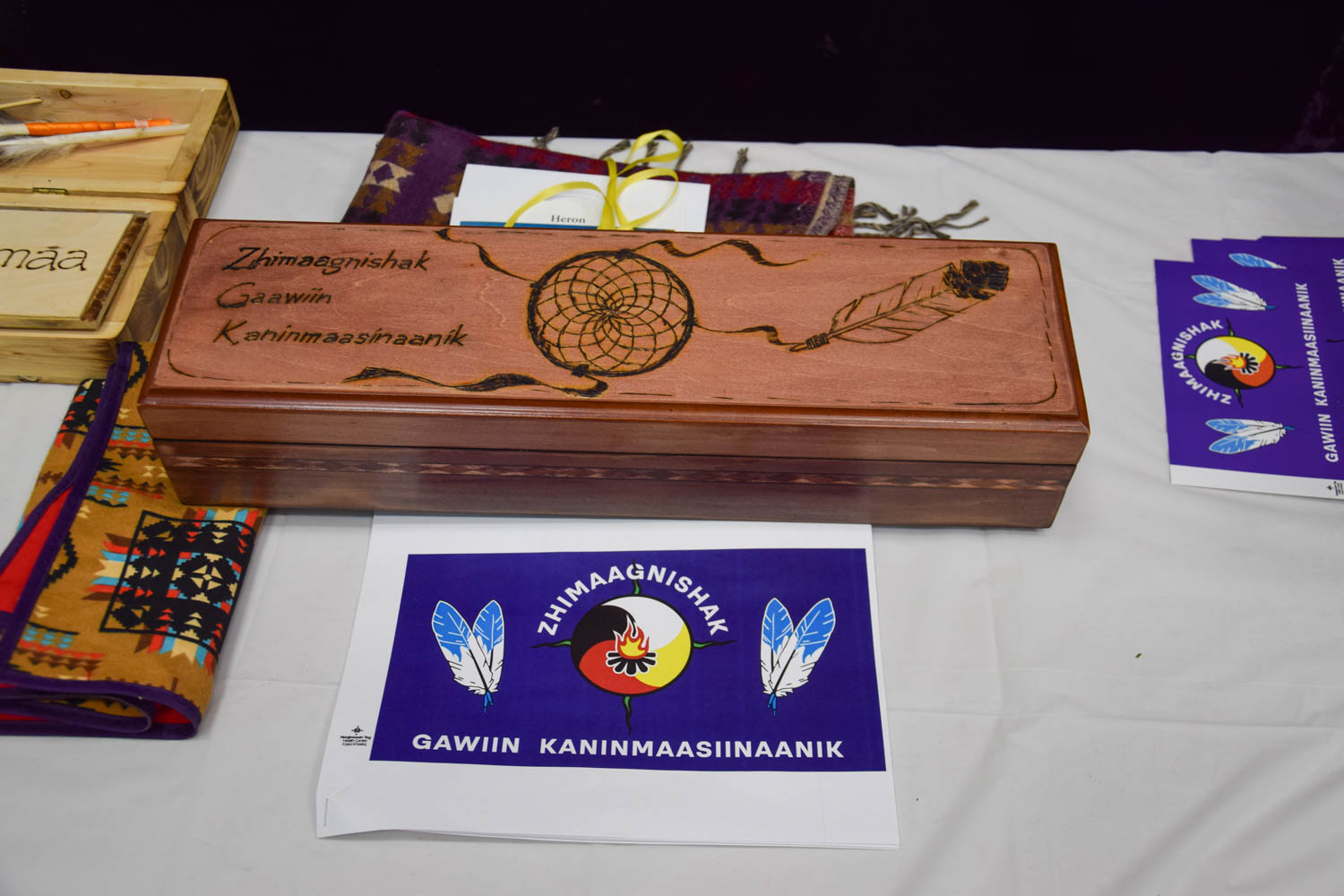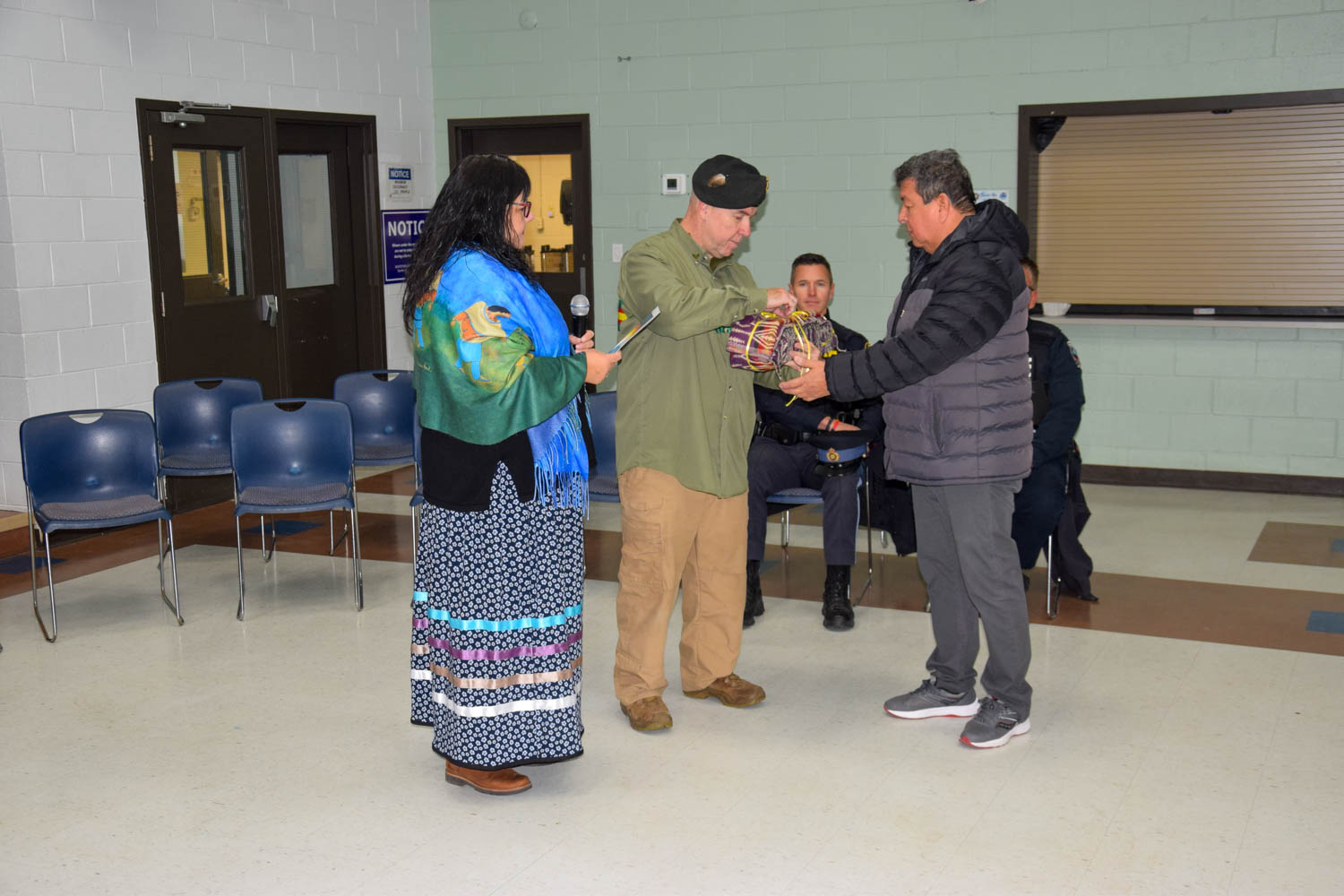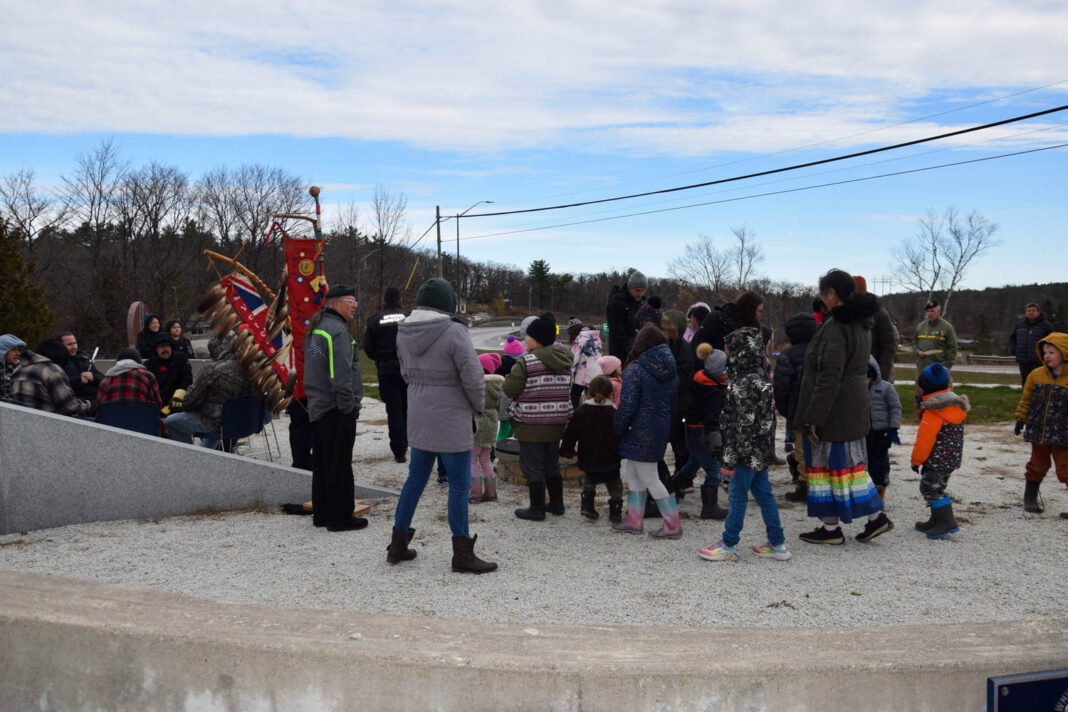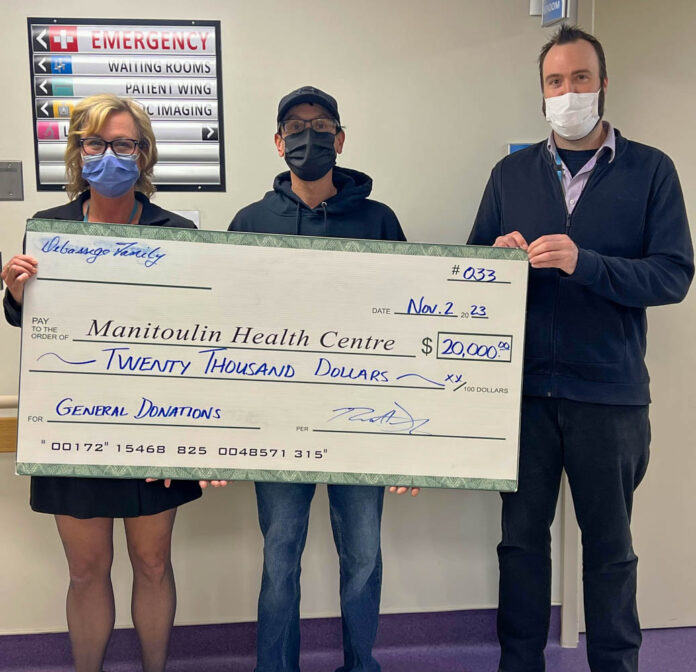WHITEFISH RIVER FN—Community members and school children from Shawanoswe School in Whitefish River First Nation gathered at the community cenotaph on Wednesday, November 8 for ceremonies in honour of the first National Indigenous Veterans Day—a day to honour those warriors who placed their lives on the line alongside Canadians, even though during the two world wars they were not considered to be full citizens of Canada.
A procession led by the eagle staffs left the warm confines of the community centre to gather by the sacred fire pit in front of the cenotaph. Master of Ceremonies and head veteran Will Morin gave a short speech about the importance of the day and the role community members have in remembering the sacrifices of the men and women who served and the families left behind when the warriors went to serve in foreign lands.
Brian McGregor, brother of the eagle staff keeper elder Tim McGregor, spoke on behalf of chief and council, outlining the importance of the eagle staff and how the feathers adorning its length symbolize those veterans who gave their lives to protect their nation’s territory. The seven feathers also invoke the Seven Grandfather teachings, the most important of which is wisdom, which each of the other teachings lead into.
Debbie Francis, director of operations at Noojmowin Teg Health Centre made a presentation to the community of Whitefish River First Nation. A special flag honouring the sacrifices of Indigenous veterans was part of the presentation and one of the flags will be presented to each of the Noojmowin Teg member First Nations.
The flag wrapped a carved cedar box created by Mr. Morin and bears two coins embedded within its lid, showing the face and obverse of a commemorative coin honouring Indigenous veterans.

As an honour song was provided by Bell Rock Singers, Kieston Pelletier, age 6, danced before the assembly.
Once back inside the community centre, elder Ferdinand Paibomsai gave an invocation
Mr. Morin gave a presentation following the ceremonies and feast on why Indigenous people signed up to fight overseas even though they were not considered Canadians, not allowed to vote and First Nations citizens were restricted to their communities unless given permission to leave—even though they were stripped of their rights upon their return from serving.
“They were equal on the battlefield, but not at home,” said Mr. Morin.

“Why did Indigenous peoples, after all that was done to them, fight alongside Canadians?” he asked. The key lies in the fact that the Indigenous peoples were allies of Canada and kept up their side of the treaties. “We honour the agreements that were made. We did not disrespect those agreements,” he said. “If we did not, we would be no better.”
In honouring the treaties encompassed within the wampum belt covenants, Indigenous peoples reassert the validity of the treaties.
“That is my job,” said Mr. Morin. “To help keep that knowledge alive.”





